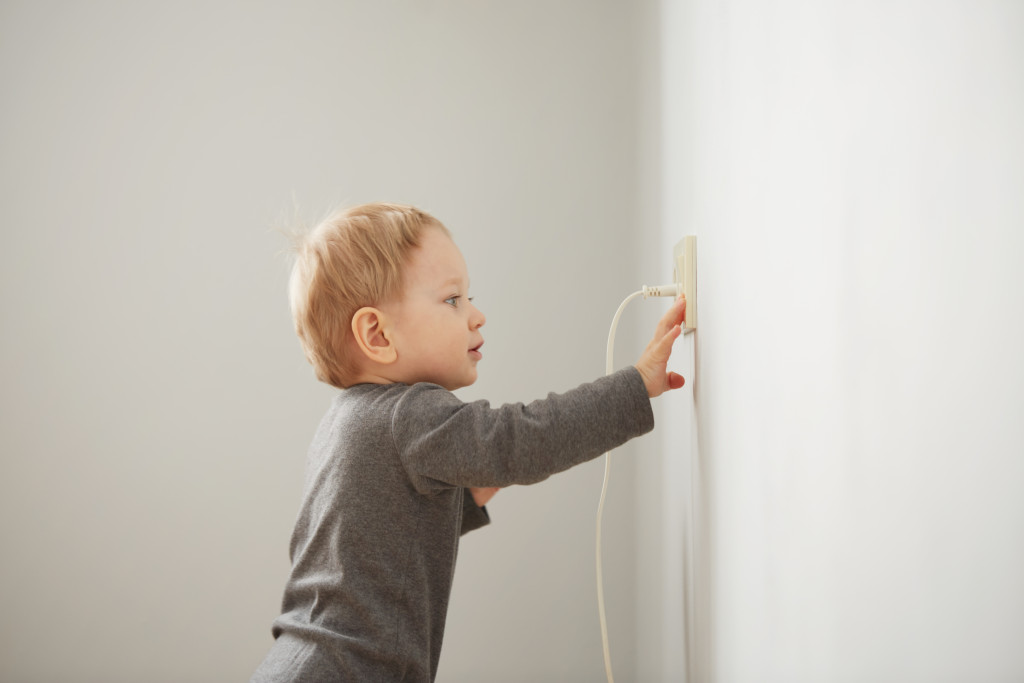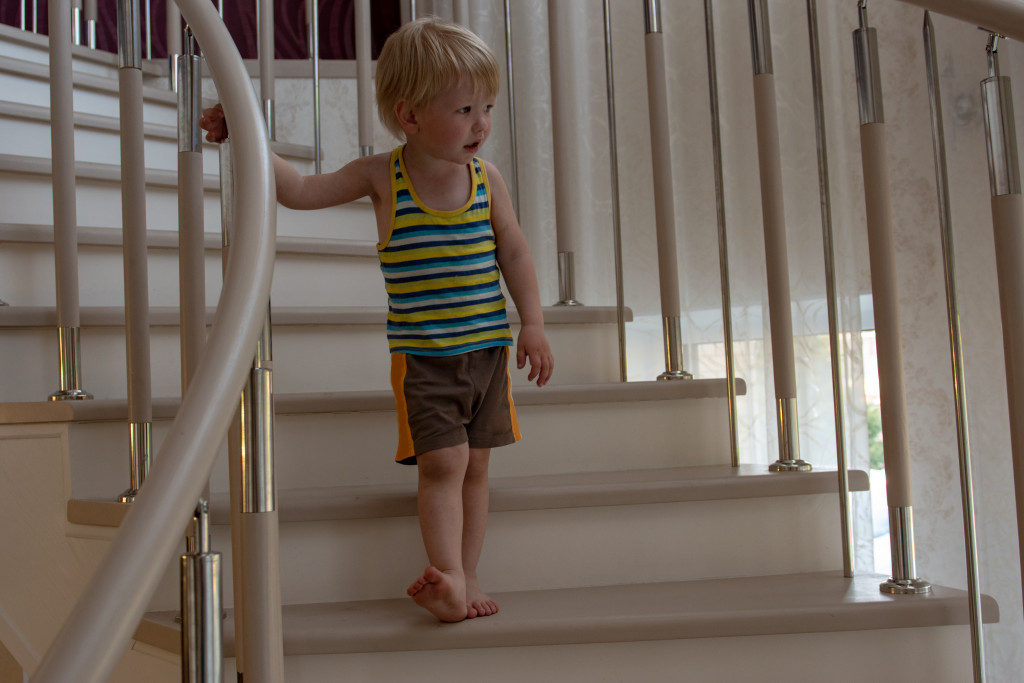- Roofing must be inspected regularly for hazardous materials such as asbestos insulation or lead paint, and non-slip surfaces should be installed to prevent falls.
- Electrical outlets should be covered and kept out of reach of children to avoid potential shocks.
- Stairways should have handrails on both sides and a barrier or gate at the base to protect from falls.
- Kitchenware, furniture, and cleaning agents should be stored safely away from young children.
- Outdoor areas such as decks and patios should also be examined for gaps and loose bolts on playground equipment so kids can play safely.
Keeping a home safe for children requires extra precautions that may not be necessary for adults. Homes can contain items and create situations that are dangerous for children but not those of adult age.
Making sure a home is safe enough for young children take extra effort and precautions beyond what’s necessary for adults, including checking potentially hazardous areas like kitchens, bedrooms, and bathrooms, which account for most household injuries involving kids.
According to National Institute of Health statistics, accidental choking is responsible for 5% of all injury-related deaths among one to four-year-olds; falls came in second place with 10%, poisoning third, resulting in 4%; drowning fourth representing 3%; fires fifth accounting 2%, and motor vehicle crash sixth counting 1%.
All these hazards should be controlled by constantly inspecting any potentially dangerous areas within homes, including the following things.
Roofing
The roof of a home can be particularly hazardous for kids, as it often contains sharp edges, roofing nails, and other construction materials that could be dangerous if not properly secured.
In some cases, the roof can also contain hazardous materials such as asbestos insulation or lead paint. These materials must be inspected regularly to ensure that they are not deteriorating or becoming airborne due to weather conditions or other factors. Professionals should always handle asbestos insulation, while lead paint needs to be removed with special care and disposed of appropriately according to local hazardous waste regulations. If any of these substances are present in your home’s roofing system, then you must remove them safely to protect yourself and your children from potential exposure.
Parents must remember that roofs can become incredibly slippery during rainstorms and when covered in snow and ice. While walking on a slippery surface may not pose much of a risk for adults who know where they are stepping, kids tend to move faster without thinking about where their feet are going – making them far more susceptible than adults would be in this kind of situation. Therefore, parents must take extra precautions, such as installing non-slip surfaces along walkways around the house to prevent falls and injuries caused by slipping off a wet or icy surface.
A reliable roofing contractor can provide additional information, tips on keeping your roof safe for kids, and recommendations on which materials are best suited for a particular climate. It is always beneficial to consult with professionals when tackling any home improvement project, especially involving children’s safety.
Electrical Sockets

Another common cause of accidents involving young children is electrical outlets. Electrical shocks can be hazardous; in some cases, they can even be fatal. Therefore, it is essential to make sure that all electrical outlets are covered and out of reach of curious hands. Plug covers come in many different designs, colors, and sizes, making it easy to find one that fits into any home’s decor scheme while ensuring its effectiveness at protecting children from potential electrical shocks.
Stairways

If your home has staircases, ensuring they are safe for children is one of your top priorities. Stairs can become particularly hazardous during the winter when ice and snow can make them slippery; taking the necessary steps to protect kids from falls and slips is essential. Installing a barrier or gate at the base of each staircase can help prevent young ones from tumbling down stairs and provide extra security against older children who may run up and down them too quickly.
Additionally, installing handrails on both sides of all staircases in your home will also prove invaluable when it comes to keeping kids safe; these rails will give children something to hold on to while they are climbing or descending the stairs, thus making it less likely that they will slip and fall.
Cluttered Household Items
Nearly everything is hazardous in a kid’s hands, even if adults usually encounter no issues with them. Without proper supervision, the child might place themselves in harm’s way. It is important to keep clutter off the floor, out of reach of a child, and away from dangerous items such as the following:
Kitchenware
Nearly everything from the kitchen, like knives, forks, metal straws, and glass dishes, can be hazardous in the wrong hands. It is essential to store kitchenware out of reach of kids, and even better to have them placed in a cupboard with a safety lock that is difficult for children to open.
Furniture
Any furniture with sharp edges or corners should be secured or covered with foam or fabric padding to prevent potential injuries. This also applies to tables, shelves, and other household items with sharp edges.
Cleaning Agents
All cleaning agents, including bleach, detergents, and disinfectants, should always be kept out of reach of young children as they can cause serious health issues if ingested or come into contact with skin. Cleaning agents should be kept in a locked cabinet or area where children cannot access them.
Outdoor Areas
Outdoor areas such as decks, patios, balconies, and other outdoor spaces can be particularly hazardous to kids if not adequately secured. Make sure that railings are secure and that there are no gaps or openings between the bar and the ground that a child could fall through. Additionally, inspect any playground equipment for loose nuts or bolts and make any necessary repairs before allowing kids onto it.
Final Thoughts
Considering all of these safety precautions when examining your home, you will be much better prepared to protect your children from hazards inside and outside the house. Taking extra steps towards ensuring the safety of our homes is essential for children to grow up in a safe and secure environment.
